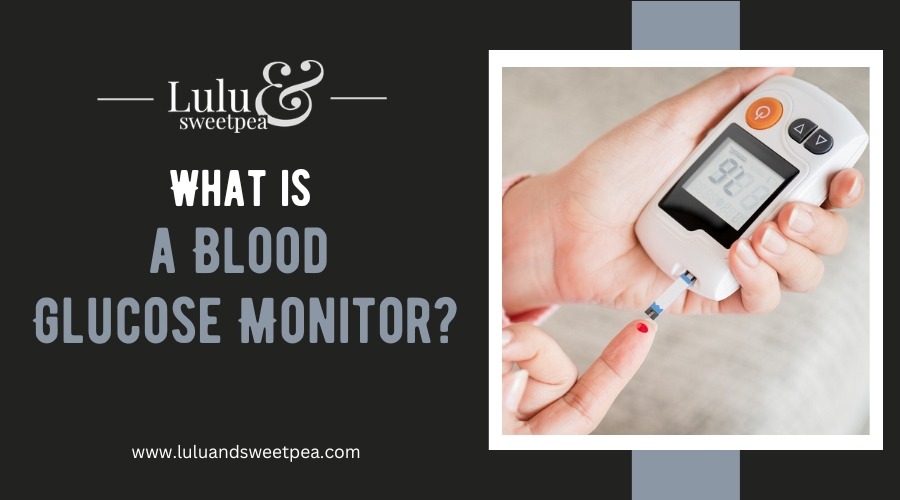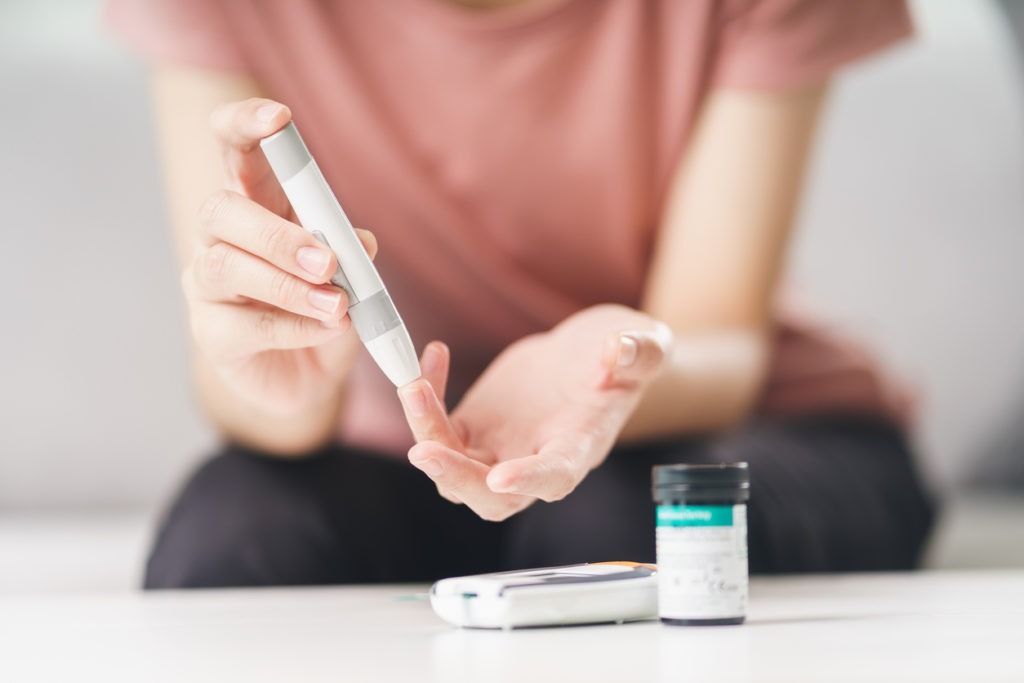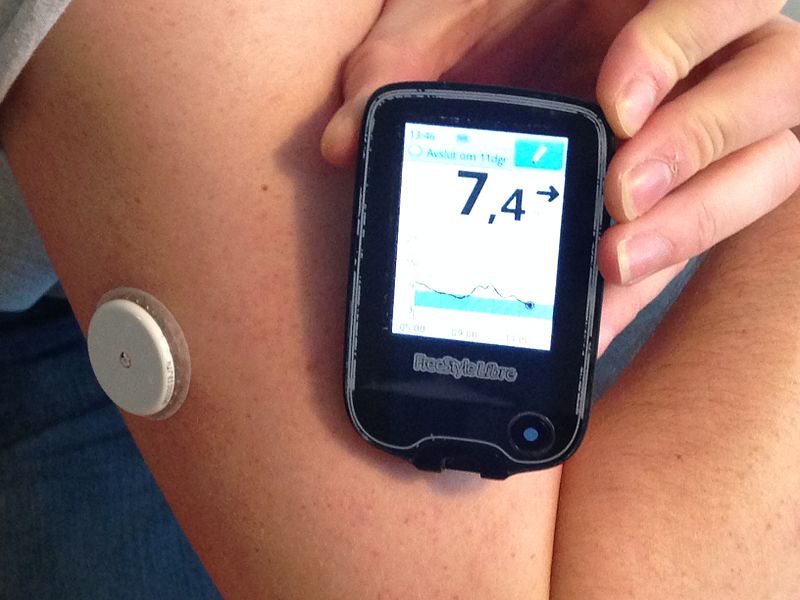There was a time when people used to visit doctors to get their diabetes status checked personally. With the evolution of technology, portable glucose meters are available today that diabetic patients can use to check their sugar levels at home, at work, or anywhere they go.
Get to know this medical device in this guide. Learn how to use it properly and how to choose when buying one.
NOTE: Always consult with your Doctor when blood glucose levels
What is a Blood Glucose Monitor?
A blood glucose monitor – also called a glucometer – is a small, portable medical device that lets you measure glucose levels (blood sugars) at home. It is done by pricking the finger and putting the blood into a test strip. Then, the strip is placed on the blood glucose monitor, and it gives you a reading.
These devices can tell you in seconds if your blood sugar is too low, too high, or on target. No matter what kind of diabetes you have, a glucometer can give you information so you can monitor your sugar levels. Keeping track of your blood glucose can help you and your doctor makes a plan on how to manage this condition.
You can purchase a blood glucose monitoring kits and supplies from a pharmacy, your doctor’s office, a diabetes educator’s office, and online stores.
Glucometers usually come with testing strips, small needles (lancets) for pricking your finger, and a device to hold the needle. Some may even include a logbook or allow you to download the readings to your computer.
Who Should Use a Blood Glucose Monitor?
People who may need to use a glucometer regularly are those who have these conditions:
- Type 1 diabetes
- Type 2 diabetes
- Latent autoimmune diabetes in adults, or LADA (this is type 1 diabetes that develops in adulthood)
- Gestational diabetes (this is the same as type 2 diabetes but only happens during pregnancy)
What are the Benefits of Monitoring Blood Glucose Levels?
Regular checking of glucose levels is a way for people with diabetes to learn more about their condition. When it is time to make decisions about the dosage of medications, diet, and exercise, knowing your blood glucose levels will help you, your doctor, and the rest of your healthcare team.
Checking your blood glucose routinely will allow you to know when blood sugar is too high or too low, both of which can cause symptoms and serious health problems. Over time, your readings will offer you and your health professionals with information required to determine the best management strategy for diabetes.
Self-monitoring (as opposed to only measuring your blood glucose during doctor checkups) lets you check your levels as often as you need to or as recommended by your doctor. The frequency of testing your blood for blood sugar levels may depend on the type of diabetes and treatment plan. Your doctor or healthcare provider will advise the best testing schedule for you, which may or may not be similar to the general testing guidelines.
The target range for blood glucose varies, depending upon your age, type of diabetes, how long you’ve had diabetes, activity level, overall health, and other factors, like pregnancy. Your healthcare provider will be able to tell you the ideal range for you. As much as possible, keeping your glucose levels within the target range is vital.
If you don’t get treatment, high blood sugar levels can lead to complications and long-term conditions, including nerve damage, vision problems, heart disease, kidney disease, and poor blood flow. Meanwhile, low blood sugar levels can cause symptoms including weakness, confusion, dizziness, sweating, and jitters, and it might lead to serious complications like seizures and coma.
Supplies You Need for Blood Glucose Monitoring
Before using a blood glucose monitor, here are the supplies you need to use:
- A blood glucose monitor
- An alcohol swab or prep pad, or soap and water for sterilizing your fingertips before puncturing
- A finger-stick device for pricking your finger, such as a lancet
- A test strip
- A bandage if bleeding continues beyond a few drops
- A way to record your results, such as a notepad or a smartphone
How to Use a Blood Glucose Monitor
A blood glucose meter is small enough to fit in a purse to be used anywhere. And it only needs a drop of blood to start testing. Each device comes with an instruction manual, and a healthcare provider will usually demonstrate or guide you in using your new glucometer. It may be your physician, your endocrinologist, or a certified diabetic educator.
These are the steps on how to use a glucometer, but these instructions may only be accurate for some glucometer models. For example, fingers are the most common sites to draw blood from, but some allow you to use your thigh, forearm, or the fleshy part of the hand. Check the instruction manual before using the device.
- Set out your supplies. Make sure you have all the things you need before you start.
- Wash your hands clean or clean them using an alcohol pad. This will help prevent infection and remove any residue that might alter your results.
- Let your skin dry completely, as moisture can dilute the blood sample taken from your finger. Don’t blow on it, as it can introduce germs.
- Turn on the glucometer. Most glucometers turn themselves on by inserting a test strip. The glucometer screen will tell you when it’s time to put blood on the strip.
- Using a lancing device, pierce the side of your finger next to the fingernails. This will hurt less than lancing the pads of your fingers. If you’re having trouble getting a quality blood sample, warm your hands by using warm running water or rubbing them briskly together.
- Squeeze your finger until it releases a sufficient-enough drop of blood.
- Put the drop of blood on the strip.
- Blot your finger with a tissue, cotton, or alcohol prep to stop the bleeding.
- Wait a few moments to generate a blood glucose level reading.
- Record your results. You can do this on paper, but there are smartphone apps that sync with glucometers to make monitoring easier. If your device records readings on its own, you may not need to record them on your own.
Things to Consider When Buying a Glucose Meter
When choosing a blood glucose meter, it’s best to know how it works. However, they differ in the types and number of features they offer. Here are some of the factors to consider when choosing a blood glucose monitor:
1. Insurance coverage
Insurance coverage is another important factor to consider. It would help if you made sure what supplies are covered by your insurance so that you can further narrow down the list of options. As already mentioned, glucose meters and strips tend to be expensive. As you will be using them regularly, it is only beneficial that you cut costs wherever possible.
2. Cost
A basic mistake people make when purchasing a glucose meter is getting carried away by its retail price. It is okay that a higher-priced glucose meter will be precise and accurate. Several other factors affect accuracy and readings, such as the strips. Therefore, give due importance to the strips as you will be using them regularly.
3. Ease of use
Some glucometers are easier to use than others. Are both the meter and test strips easy to hold? How easy is it to put blood on the strips? Can you see the numbers on the screen easily? How much blood is needed to test? These are the questions you may need to ask yourself to ensure it’s easy to use.
4. Automatic Coding
Most glucose meters are calibrated with a particular set of strips. If you use different strips, the results would be accurate. On the other hand, some glucose meters require you to insert a code and then download an app to scan the codes using your smartphone. Either way, make sure that calibration remains unbothered, as it directly affects the results.
5. Data Storage and Retrieval
Some glucometers come with a data storage feature, which means that they will store your readings and results for you to compare. This is a great way to track your progress and closely check your glucose levels without you needing to record it manually. Therefore, consider buying a glucose meter that stores as much data as possible.
6. Test time
If you are someone who checks their glucose levels multiple times daily, you would want a glucose meter that displays results as quickly as possible. Waiting for 10-15 seconds each time could become a nuisance. Opt for a glucose meter that takes accurate readings and displays them as well within 5 seconds.
7. Special features
Glucometers vary in cost, size, features, and capabilities. Choose what features will be useful to you. All of them can test the blood and give a reading on your blood sugar levels, but some can even include:
- Backlit screens so you can see the readings in low light
- Audio capabilities for people with vision impairment
- Preloaded test strips for people who have difficulty using their hands
- Additional memory or data storage
- USB ports to load information directly to a computer
8. Support
Most glucometer manufacturers have a toll-free number that you can call for help. Look for one that includes clear instructions on how to use the glucose monitor correctly.
A Continuous Glucose Monitor – An Alternative
Most glucometers require you to take a blood sample to measure your blood glucose levels. But there’s an alternative monitoring option – continuous glucose monitors (CGM). These devices come with a tiny sensor inserted under your skin, usually in the abdomen, upper arm, or thigh. The sensor then transmits a glucose readout to a monitoring device or smartphone every 5-15 minutes. This allows you to monitor glucose levels without pricking your finger multiple times.
However, a CGM is more expensive than a traditional glucometer. Its sensor must be replaced every 7-14 days, depending on the brand.
This type of glucose monitor is typically recommended for people with type 1 diabetes because they need to test their sugars more often. Ask your healthcare provider if it’s the right choice for you.




